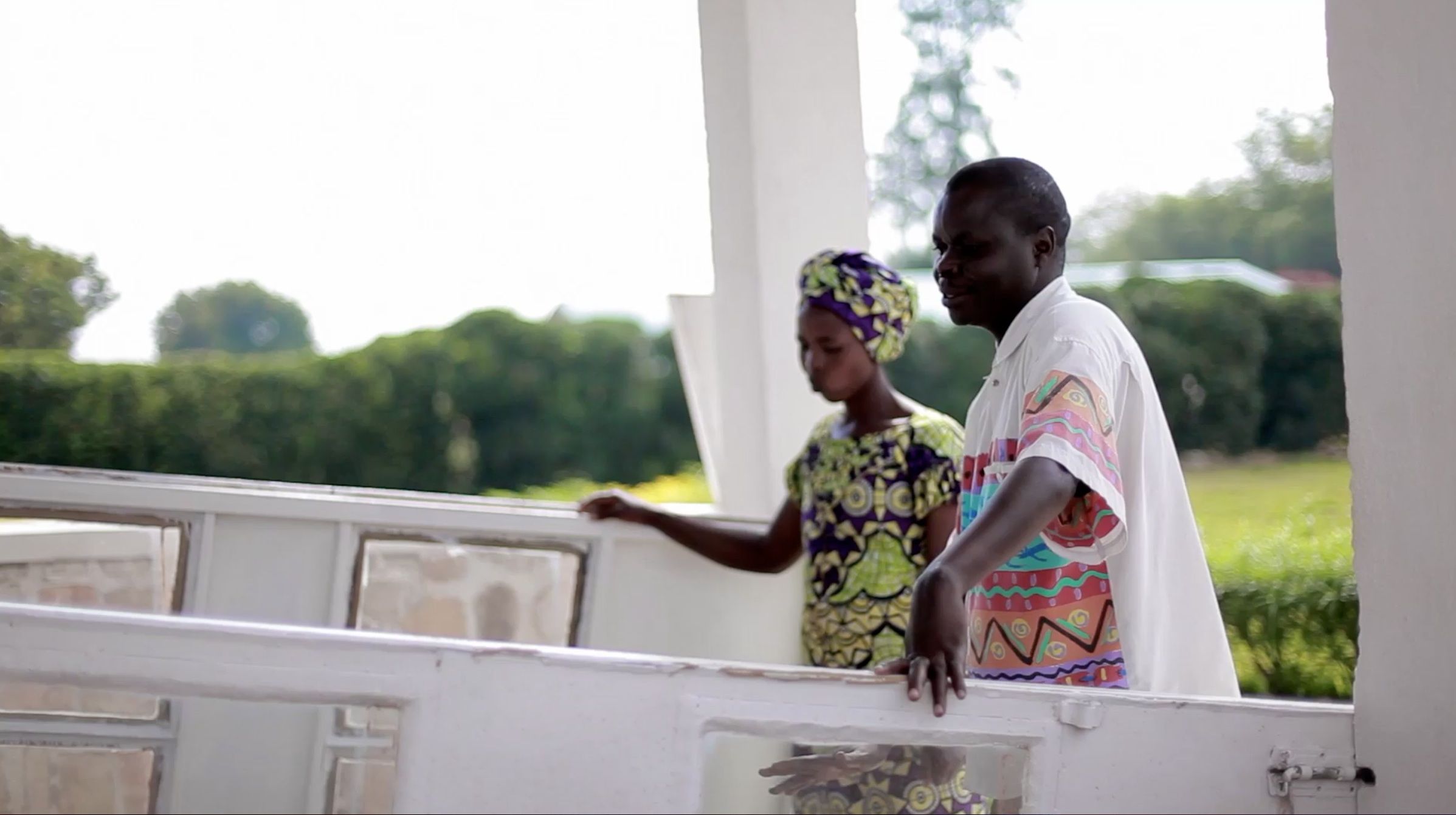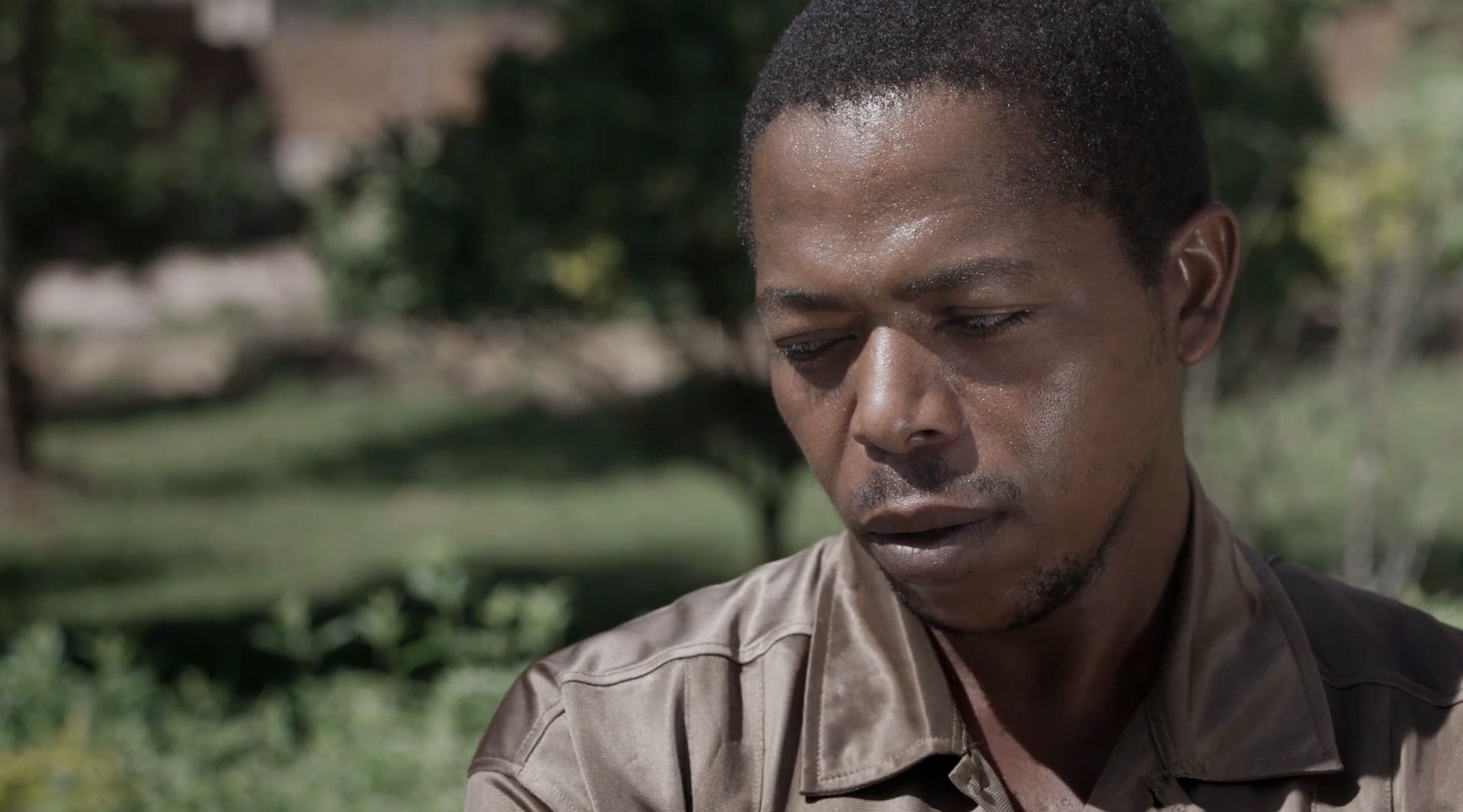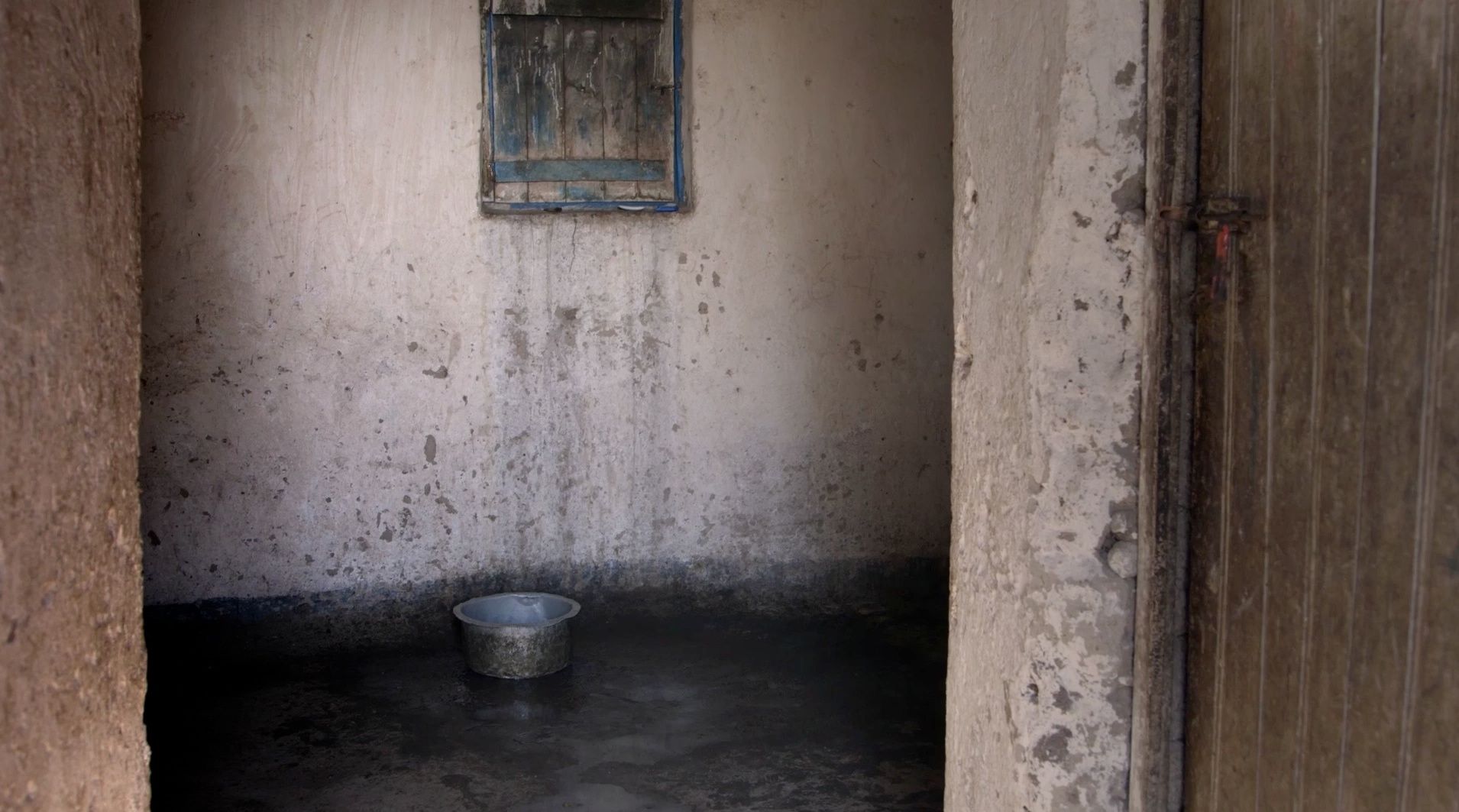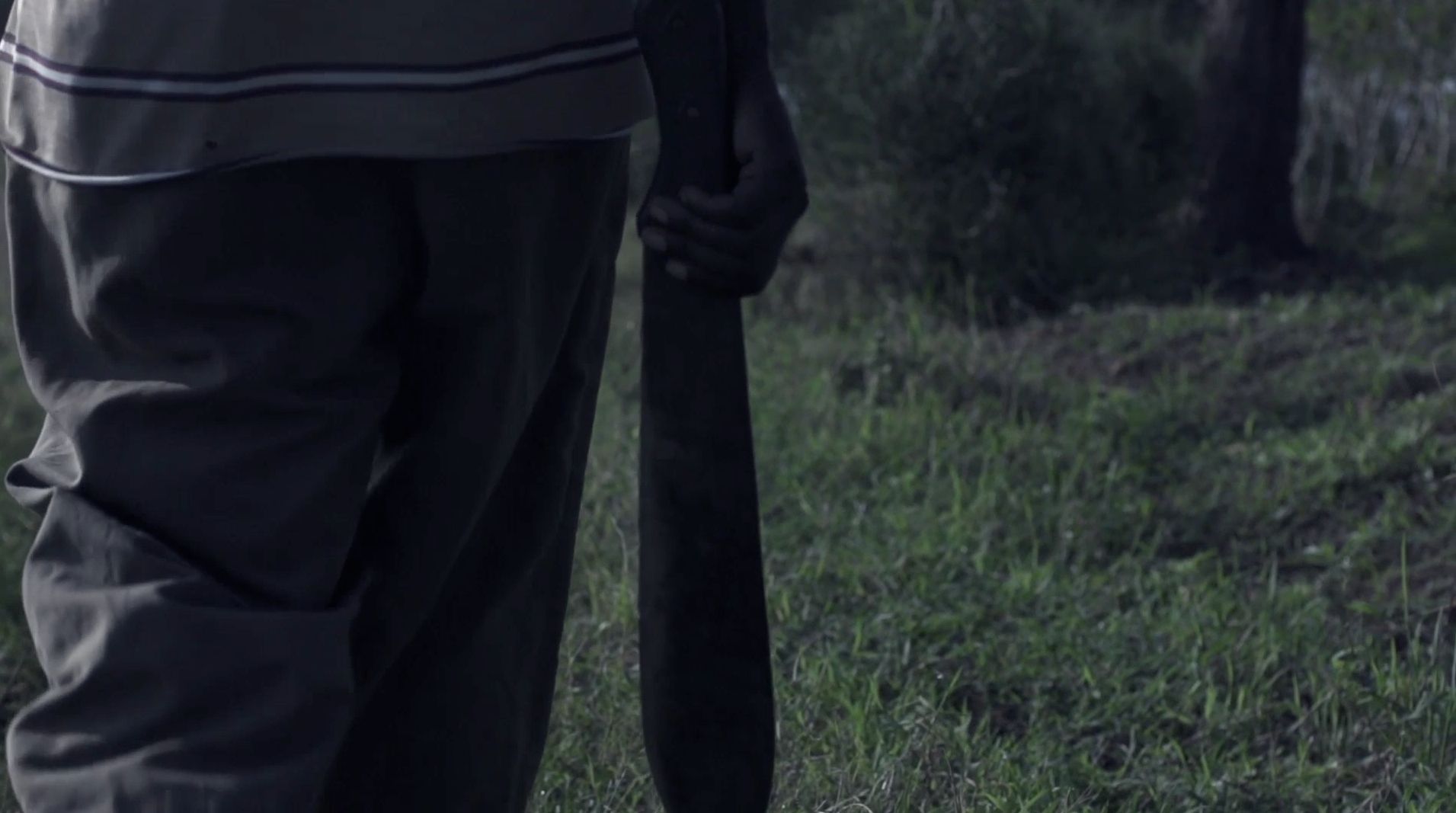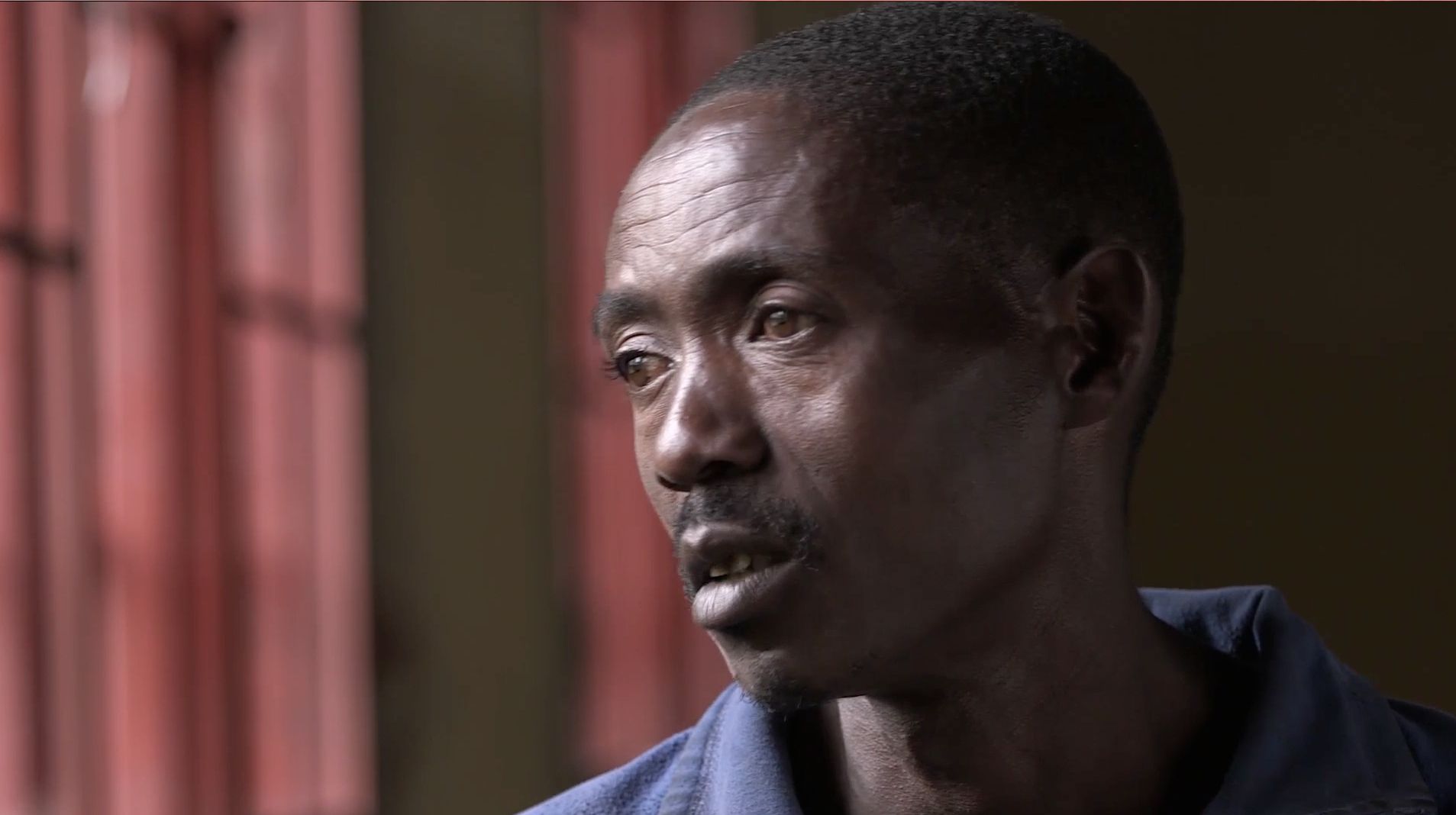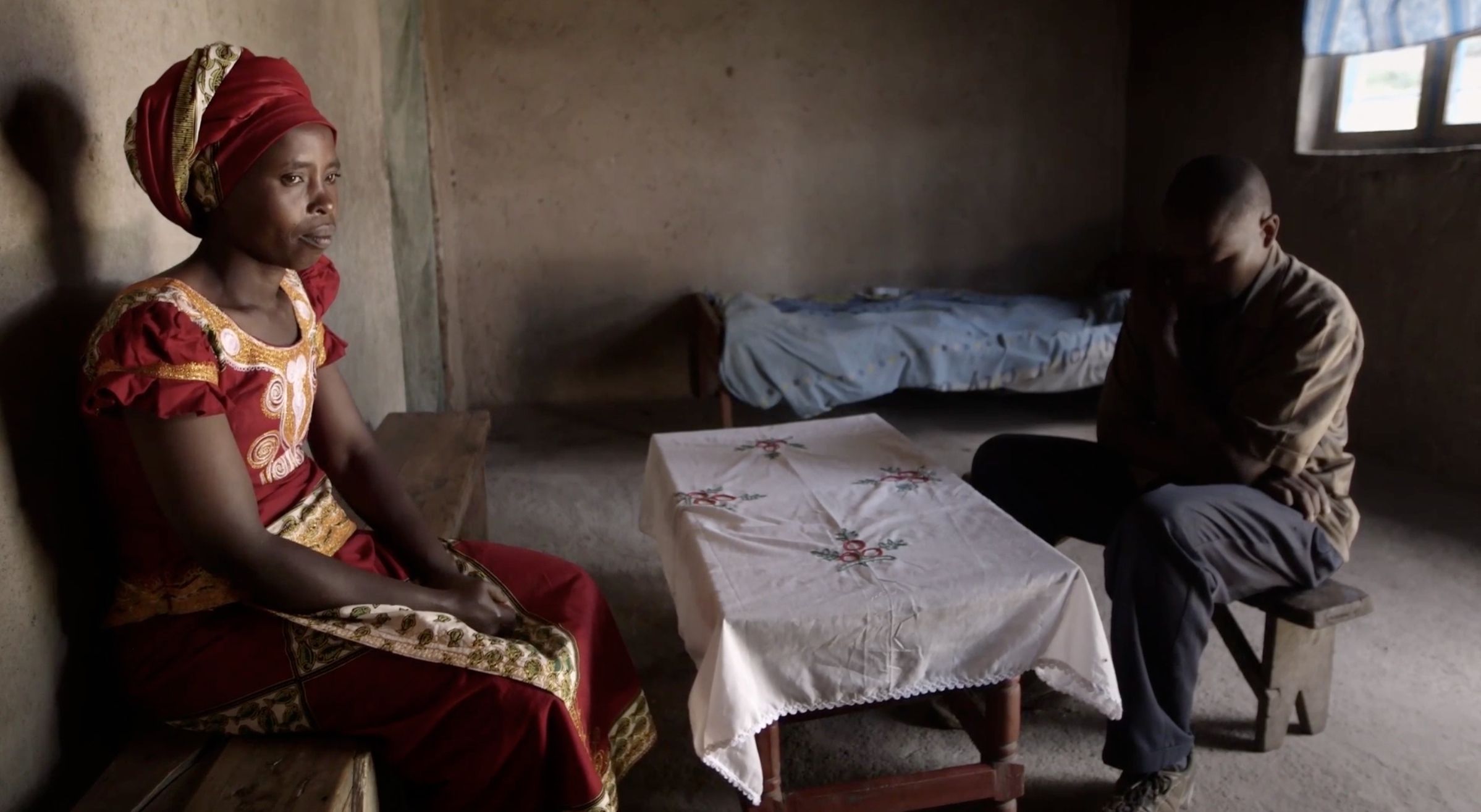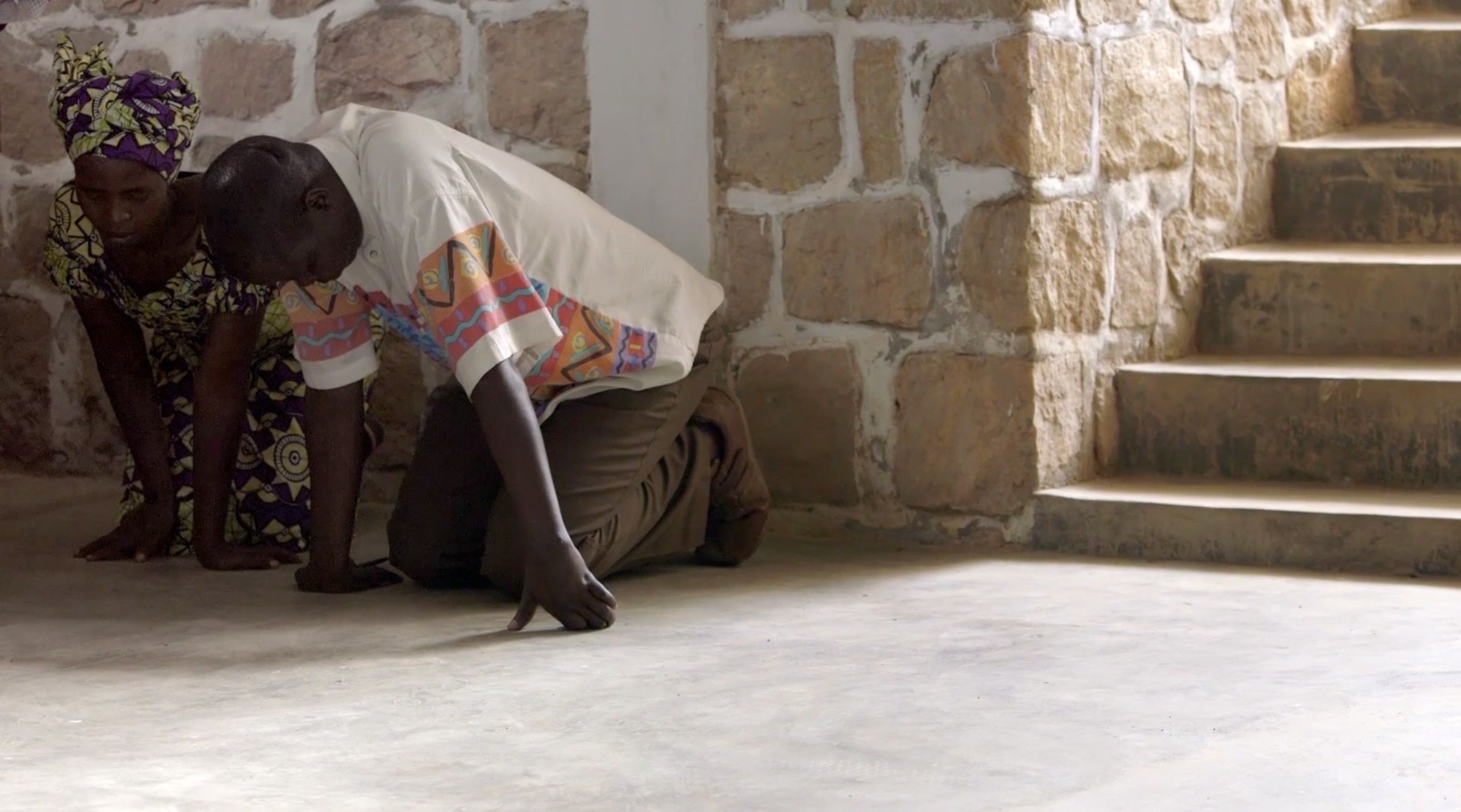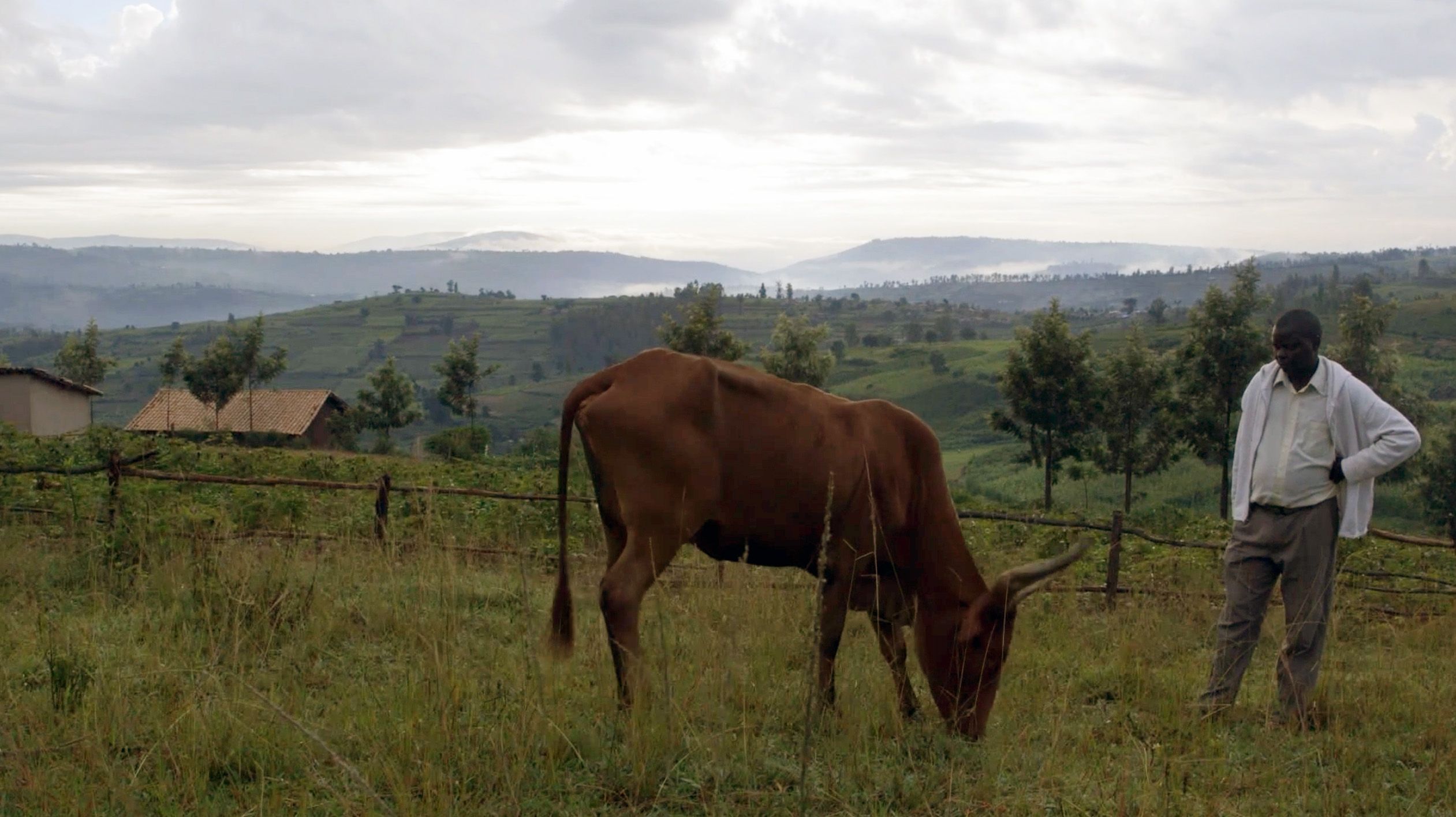View the full interactive multimedia project online at the Atavist.
“This place,” Wellars Uwihoreye said to Innocent Gakwerere. “Do you remember the drinks we had at this place?”
“Yeah,” Innocent said. The two men were walking through the ruins of the house that Innocent had lived in years ago, in the Rwandan village of Mugina. “Especially on festival days.” He laughed, then both of them fell silent for a moment.
“We also played soccer,” Wellars said. “Our parents used to be very close friends.”
Innocent sent the remains of a wall crashing into the thick overgrowth, then sat down on what used to be a windowsill. Rolling a stick between his fingers, he looked at Wellars. “Please, tell me,” he said. “How was it?"
“It was bad. Terrible. We had become animals.”
When the Rwandan genocide began, Innocent was living in Kigali. A 24-year-old member of the Tutsi ethnic group, Innocent had grown up in a small village not far from the capital, but his father had left the family when he was a teenager, and Innocent moved to the city in hopes of making a living there. He worked as a milk seller and was taking driving lessons to qualify for odd jobs as a driver.
Then, on April 6, 1994, Rwandan president Juvénal Habyarimana, a member of Rwanda’s ethnic Hutu majority, was killed when his airplane was shot down as it approached Kigali. To this day, it is not clear who was responsible, but Hutu extremists blamed the Tutsi.
Rwanda’s ethnic divisions are largely a relic of the country’s colonial past. In precolonial Rwanda, the terms Hutu and Tutsi had referred to farmers and herdsmen, respectively, but the boundary was a porous one. It was Belgian colonists who turned them into fixed categories, instituting ethnic identity cards and treating the Tutsi as a preferred elite. The Hutu majority chafed at the Tutsi’s privileged status. A Hutu-led revolution in 1959 sent thousands of Tutsi into exile in neighboring countries, where some of them began plotting insurgencies against the new Hutu-led republican government.
Habyarimana was Rwanda’s third democratically elected president and had been in power since 1973. In the early nineties, with a Tutsi insurgency under way across the border in Uganda, he turned to radio propaganda to stir up Hutu anger toward the Tutsi. Several investigations concluded that Hutu extremists, in fact, were responsible for shooting down his plane, creating a pretext for a wave of revenge killings that had been plotted in advance. (Lists of Hutu opposition members and moderates had been drawn up before Habyarimana’s death, and many of the people on them were murdered in the early days of the genocide—including prime minister Agathe Uwilingiyimana, herself a Hutu.)
Within hours of Habyarimana’s death, Hutu mobs roamed the streets of Kigali with retribution on their minds. The next day, fearing for his life, Innocent Gakwerere fled the city, walking some 25 miles back to his home village of Mugina.
Mugina is a string of hamlets stretched along one of Rwanda’s countless forested ridges. Hillside plots of sorghum, beans, and corn descend toward the streams in the valleys below; patches of bright green banana groves dot the earth. The mayor of Mugina was a Hutu, but he had promised that Tutsi would be safe in the village’s Catholic church, on the road leading to Mugina’s main market. As the violence escalated, the church rapidly became a destination for refugees fleeing the killing elsewhere—and, soon, in Mugina itself.
When Innocent arrived on the night of April 7, his family had already abandoned their house and, he later learned, sought refuge in the church. He spent one night in the house, then fled into the banana groves. That was where a mob of local Hutu found him nine days later.
“As soon as I saw the mob coming, I panicked,” he recalls. “While attacking, they sang: ‘Eeh, eeh, let’s exterminate them!’ They cut me with machetes. And I said to myself: Now I will die. I fell unconscious. I didn’t feel anything. I spent days feeling the bliss of being very far [away], dreaming things.”
Although Innocent didn’t know it at the time, the man who tipped the mob off to his whereabouts was Wellars Uwihoreye. He was an ethnic Hutu. He was also Innocent’s childhood friend.
“I followed him,” Wellars says. “And I am sure he saw me hunting him.”
Badly wounded by the mob that Wellars had sent after him, Innocent dragged himself to the church. Tens of thousands of Tutsi had already crowded into and around the building, including many of Innocent’s friends and family.
Then, on April 20, two weeks after the beginning of the genocide, members of the Hutu Interahamwe, a paramilitary group, killed Mugina’s mayor. The militiamen swiftly moved on to the church, and what had been a refuge suddenly became a deathtrap. Over the course of several waves of assaults with guns, grenades, and machetes, at least 20,000 Tutsi—and possibly as many as 45,000—were murdered.
The Rwandan genocide lasted just over three months and left 800,000 Rwandans dead. At the peak of the bloodshed, nearly six people were killed every minute, often by their neighbors. In the aftermath, in cities like Kigali, victims and offenders could avoid facing one another, but in villages like Mugina they met every day: at the well, in the fields, in the market, at the church. People who had just tried to kill one another had to learn to live as neighbors again.
On a recent day in Mugina, Wellars sat and contemplated the tool that he and others had wielded to such horrific ends during the genocide. “Actually, the machete is a very good tool,” he said. “But we made it bad. I used it to kill people, who come back in my dreams. I pray to get free from these dreams—they are haunting. The devil had gotten into me; I was not myself. He was the one who changed me—but I am the one who killed.”
Wellars Uwihoreye was born in Mugina in 1966. He left school after third grade, when he was 12, to become a metalworker. He quickly excelled, forging engine parts, ploughs, axes, and knives. The first inkling Wellars heard of the genocide came from friends who talked about Hutu propaganda they had encountered on the radio. “I heard that some Tutsi were buying cisterns to throw us Hutu into boiling oil to fry us alive,” he says. “I remember the Tutsi suddenly appeared like hypocrites to me, that although they seemed to be friends, they didn’t tell me any of this.” Still, when his Hutu neighbors started torching houses in Mugina, Wellars was so afraid that he considered fleeing to the church grounds along with the Tutsi. “Then someone told me, ‘Watch carefully! Don’t you see that not all houses are in flames? Only the first, the third, then the fifth house. Those are Tutsi houses being burned. Please, there is no reason to flee.’”
So Wellars stayed.
Innocent was one of only a few survivors of the attack on the church in Mugina. During the attack, he was again hacked with machetes, and grenade shrapnel tore into his legs. He passed out between mounds of corpses in the church courtyard and lay unconscious there for days.
“When I opened my eyes, I was covered in worms, and dead bodies were all around me,” Innocent recalls “I saw babies breastfeeding from their dead mothers. Then a bulldozer gathered the bodies, for they were already rotting and smelling bad. And you had to look and just say, “For sure, there is no God.”
After the genocide, everywhere Innocent went he saw perpetrators. “They had fields and land and cattle,” he says, “and I had nothing. When we didn’t have soap in the house I got angry, because I knew that before, I had been able to work and earn money. I wanted thunder to come down and strike them dead.”
Wellars, meanwhile, spent 13 years in prison before he appeared before a village court, where he admitted to his role in the killings and was sentenced to time served and released; the government, overwhelmed with hundreds of thousands of perpetrators, had eventually opted for a policy of forgiveness. Many Tutsi were appalled by this, including Innocent. “If they had asked us to kill the perpetrators,” he says, “we would have done so immediately.” But when he saw how hard it was for Wellars to confess in court, he didn’t know what to say.
One day after Wellars’s release, Innocent spotted him among a group of men working on a construction site. Although he had seen Wellars in court, he was unaware that he had been among the Hutu who had chased him through the banana grove. He approached him to chat.
“I could not speak to him,” Wellars says. After leaving prison, Wellars had returned to Mugina but lived in fear of his neighbors. “I came thinking the Tutsi will immediately kill me,” he says. But one day in 2011, he got up the courage to go to Innocent’s house and confess what he had done.
“When we first met again, Wellars says, “what could I say? I was petrified to see him again. As if you killed someone, and a month later you discover he’d been resurrected. But running away from him didn’t help.”
So Wellars went to Innocent’s house to ask him for forgiveness. At first, he says, “We talked about normal things, just small talk.” Then after a while, he said, “Innocent…”
“Yes?”
“I have truly offended you—I have come to ask you for forgiveness.”
“What have you done to me?” Innocent asked. “What do you mean?”
“He already knew everything,” Wellars recalls now. “He only wanted to confirm my authenticity. So I told him that I had hunted him. So he’d be killed at the roadblock. That I destroyed his house.”
Then Innocent was silent for a long time.
Weeks later, Innocent invited Wellars to join him in a program run by a man named Christophe Mbonyingabo. Christophe was a Rwandan and a Tutsi, but he had grown up across the border in the Democratic Republic of the Congo; his family had fled Rwanda before he was born because of Hutu persecution. Still, Christophe had never made much of his ethnic identity until, in the waning days of the genocide, Hutu militias were driven out of Rwanda and into his village, where they threatened him and his family. “I felt so much pain and hatred that I wanted to join a rebel movement,” Christophe says. “But later I wondered where all this hatred had come from.” And most of all, he wondered if it would ever go away.
Later, Christophe moved to Kigali to study sociology. By then, the UN—whose blue-helmeted troops had stood by and even withdrawn during the genocide—had convened an international court in Arusha, Tanzania, to try the genocide’s perpetrators. The idea struck Christophe as futile, even infuriating. The UN troops, he says, “should have been the first to answer to these courts. They had all the means to stop the genocide, and they didn’t. It was hard for Rwandans to listen to their advice. You left us to die and now you want to teach us?”
Unless Rwandans themselves came to terms with the genocide, Christophe believed, the slaughter could start again at any time. So in 2002, he founded Christian Action for Reconciliation and Social Assistance (CARSA), a nonprofit organization that would bring together victims and perpetrators of the genocide. In workshops, village meetings, and other carefully arranged encounters, they would ask each other for forgiveness.
When Wellars again asked Innocent to forgive him, in front of the group at Christophe’s workshop, Innocent gave him a hug and told him, “Let’s go to the bar and have a drink.” Step by step, Innocent had lost his anger toward Wellars. He had learned that Wellars had not planned the killings and had given back the land he stole during the genocide. He had also helped Innocent discover the identity of the man who had killed one of his brothers.
Over time, something deeper evolved: The two men became friends again. When Innocent’s wife fell ill, Wellars bought her medicine. When Wellars moved houses, Innocent helped him. When one has money, he buys Fanta—or, at night, beers—for both. “Before the genocide, our friendship was about childhood,” Innocent says. “Now it is more focused, it is stronger. I can call upon him when I am in trouble.”
In late 2011, CARSA gave Innocent and Wellars a cow to care for together, as part of the organization’s reconciliation program. Cattle are an important indicator of wealth in Rwanda, and before the genocide they were a source of tension between the Hutu and Tutsi: Tutsi had traditionally owned cattle, while the Hutu had not. During the genocide, Hutu propaganda used this disparity to incite would-be killers: Kill the Tutsi, the Hutu were told, and you will get their cows. Some Tutsi say they escaped being killed only because the perpetrators were so focused on catching their cattle.
After the April 1994 massacre at the church in Mugina, as Innocent was drifting in and out of consciousness, he remembers waking up at one point and seeing a woman creeping toward him on her knees. She, too, had survived the attack, but the Hutu militiamen had cut her Achilles tendons, and she could no longer walk. Her name was Claudine Murebwayire, and as she and Innocent spent time together in the hospital recovering from their injuries, they became friends.
Claudine had a husband and a baby, and two of her brothers had sought refuge in the church with her. At one point her baby began crying, and the militiamen hacked the child to death in her arms. Claudine passed out. Her brothers, who had managed to hide during the killings, found her alive that night amid the thousands of dead bodies in the church. They found her husband, who took her to a hospital. She and her husband were soon separated, however, and he was killed soon after.
The brothers who had saved Claudine at the church would be killed, too, on one of the last days of the genocide. They were caught by a group of local Hutu, who beat them and then buried them alive in a banana grove; they died, three days later, of suffocation. Among the Hutu who buried them and then watched them to make sure they didn’t escape was a man named Ananias Ndahayo.
Altogether, Ananias committed or was an accomplice to eight murders during the genocide. But it was the death of Claudine’s brothers, he says, that led him to set down his machete and walk away from the killing. “When I saw the blood,” he says, “it looked like mine.”
Today, Ananias lives near Claudine in Mugina. Although they had seen each other around the village for nearly two decades, when Christophe and CARSA first approached Claudine about meeting Ananias, she angrily refused. “I told him, ‘The road has two sides,’” she says. “‘Right and left. If I’m on the left, you move to the right. Don’t greet me ever.’ That’s how I live with that man.”
Months later, in September 2013, she finally agreed to talk to him, for the first time since her brothers were murdered. The meeting took place in a small mud house chosen by CARSA, because Claudine still didn’t feel comfortable allowing Ananias into her home. Heat rippled through the door in waves as Claudine waited with Samson, Christophe’s colleague from CARSA, for Ananias’s arrival. “Do you want to go ahead with this?” he asked.
Claudine thought for a moment. “Let him come,” she finally said, “so we can see what he has to say.” Ananias came in and sat down on a wooden bench across from her.
As Claudine listened, Ananias recounted the story of her brothers’ deaths. “We made them sit down,” he said. One of those who arrested them was my brother Martin. And he told the children to dig their own graves. The older one tried, but his hand was cut badly, so he couldn’t dig. When you know you’re about to be killed, you don’t have the strength.
“My brother had a very long sword,” he went on, “and he went to sharpen it on a stone. And I had a big stick and hit them on the feet. Then we pushed them into a hole we had dug ourselves, and we covered them with soil. As they were suffocating, they tried to get out. They were screaming. We buried them alive.”
When he had finished, Claudine turned to Samson. “Ananias is lying,” she said. “About the sword that was sharpened. Please,” she said, turning to Ananias, “don’t lie. I know everything you did to them.”
“No!” Ananias said.
“You lie. I know what you did. Even what you used the sword for, I know.”
“What I did—”
“The problem with you is that you are lying. Please! I can’t stand it. You never told the truth, did you? Not even in court.”
“I didn’t admit it in the first trial because I was afraid,” Ananias said. “The sword—I didn’t see Martin use it after he sharpened it. I can’t admit what I didn’t do.”
“So you did not touch them?” Claudine said.
“I hit them with a big stick.”
“Your colleagues say you are the one who slew them with the sword. If you don’t remember, ask them whether you took the sword or not. Those who killed my brothers have never been punished. And even now, you have never been sanctioned.”
“I am asking you to forgive me,” Ananias said.
“It is good you came,” Claudine said. “It has helped me to hear it from you. I know my brothers will not come back. It is enough for now. I will go to my family and talk with them, to tell them and to decide whether you really deserve forgiveness or not.”
One morning five months later, in February, Innocent went to pick up Claudine from her house. Together they walked to the place where they had first met: the church where the massacre had taken place. He held her hand as they strolled along a red dirt road towards the church, and laid an arm around her more tightly as they entered into the the memorial that had been built on the site, an underground mausoleum full of rows upon rows of coffins. “Have I been a fool?” Innocent asked Claudine. “For having forgiven a killer who murdered these people?”
“You have been on that journey, being yourself,” Claudine said. “That is a big thing. Never go back. I hope for it, too. I feel like forgiving. But today I feel it, and tomorrow it’s gone.”
“What do you think about bringing your offender right here? What would happen? How would you feel in your heart?”
“I can’t bring him here. I respect this house.”
“You cannot? You know my heart is relieved after forgiving.”
“I surely feel like forgiving,” Claudine says, “but I feel it today and tomorrow it is gone.”
They were silent for a while. Then, as they climbed the stairs into the midday light, Innocent said, “There is one thing that I have noticed about you, Claudine. You do not take time to interact with many people. You isolate yourself, you do your own things, right?”
Claudine nodded.
“If like me you are always with a variety of people, you just feel more confident that you are Rwandan. You know I talk with many people, Hutu, Tutsi, Twa.”
“So where do you meet all those people?” she asked.
“It sounds miserable, but I meet them in bars. Bars do not distinguish ethnic groups.”
Four months later, Claudine and Ananias took part in another CARSA workshop. Although it had seemed that the history they shared was too much to overcome, Christophe Mbonyingabo had arranged another meeting. Afterward, he sent out a message including a photo of the two of them smiling.
Claudine had told Ananias that she forgave him. That was the first step; their path toward reconciliation has only just started.

